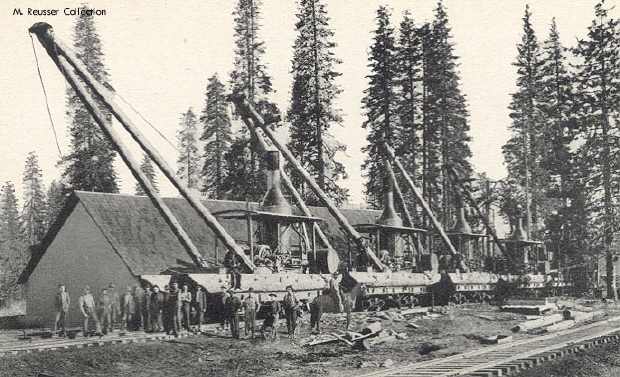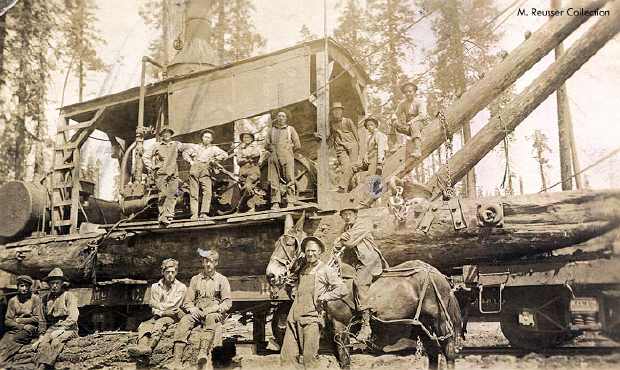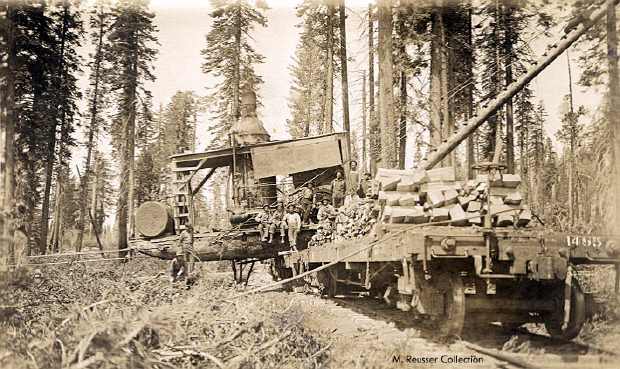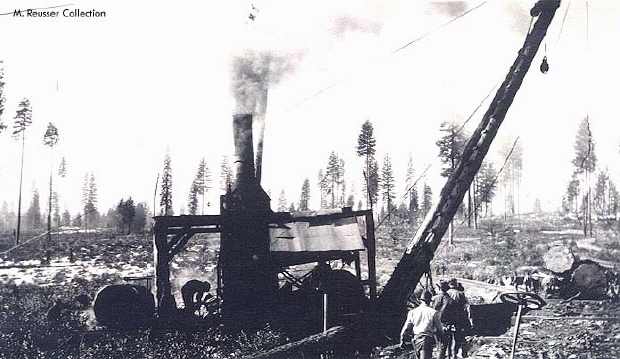|
McCloud Rails: McCloud River Lumber Company Donkey Loaders
|
|
|
|
The donkey engine was patented by Mr. John Dolbeer of Eureka, California in 1882. Loggers had long struggled with how to skid logs in the forest from where the tree came to rest to the sawmill. In the early years this was usually accomplished with animals, usually either horses or oxen. Railroads reduced the distance that a tree had to be drug, but it was impractical to build a railroad next to every tree that would be cut down. The donkey engine provided a solution to the skidding problem, and it quickly replaced most animal power in the woods. The donkey in it's most basic form consisted of an upright boiler that drove a series of spools through a cyliner and gear arrangement, all built on a heavy wooden sled. The donkey engine was found to be usefull for many other tasks as well. The McCloud River Lumber Company figured out a way to load logs onto railcars with them by adding a large boom off of one end of the engine, thus transforming the donkeys into a stationary crane. This arrangement was duplicated on several other logging shows in the northwest, and on one such operation not far removed from McCloud the boom applied to the donkey was known as the "McCloud" boom. All photos on this page are from the collection of Marc Reusser. |
|
|
 |
|
Four donkey loaders on flatcars waiting for the logging season to begin. |
|
|
 |
|
Unloading a donkey loader from a flat car in preparation for the start of loading operations. |
|
|
 |
|
Another shot of a donkey loader being unloaded from a flat car. |
|
|
 |
|
One of the donkey loaders at work. Location appears to be somewhere in the White Horse tract, somewhere in the vicinity of Camp Two, judging by the type of vegetation. |
|
|